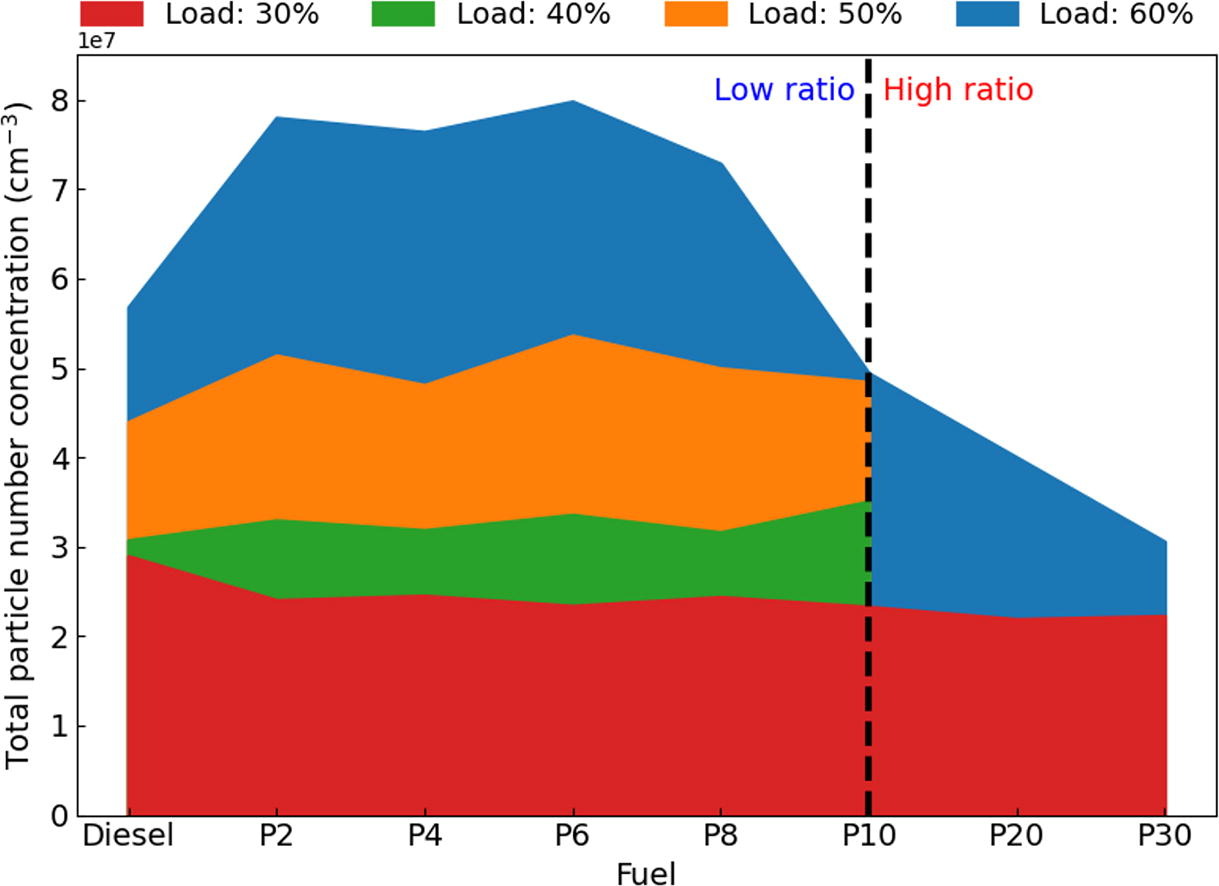Understanding the blending effect of polyoxymethylene dimethyl ethers as additive in a common-rail diesel engine
- Systematic experimental study on diesel blends with PODE3 additive of low ratio within 10%.
- Smaller lower heating value of PODE3 has a negative effect on particle reduction when blending ratio is within 10%.
- ‘Particle saturation’ is observed for nucleation mode particles under different ratio and loads.
- Oxygen content in PODE3 shows significant effect on particle reduction under high engine loads.
- The proportion effect of PODE3 additive is investigated with blending ratio of 0–30% and under 30–60% loads.
 Polyoxymethylene Dimethyl Ether (PODE) is known as a promising additive in the traditional diesel engine because it can reduce particulate matter emission in the exhaust gas. The reduction of the particulate matter emission when PODE is used as fuel additives is often attributed to the absence of C-C bond and the high oxygen content of the PODE molecular structure. In this paper, we have studied diesel-PODE3 blends at both low blending ratio (<10%) and high blending ratio (10–30%). We have found that the high oxygen content effect of PODE3 is only prominent in reducing the emission of particulate matter when there is a deficiency in the air supply of engine. Meanwhile, the effect of the absence of C-C bond has negligible impact on the emission of particulate matter. Moreover, an increase in the emission of the particulate matter was observed for the fuel blends containing low blending ratio of PODE3. This is attributed to the decrease in the mean chamber temperature for the PODE3-diesel blends as the lower heating value of PODE3 is much lower than diesel. Despite this, high blending ratio of PODE3 in diesel was found to still capable to decrease the emission of particulate matter. A summary chart has been proposed in this study to enable the prediction of the particle reduction ability of PODE3 additive under different blending ratios and engine loads. In addition, the combustion characteristics and gas emissions (HC and NOx) are also discussed in this paper.
Polyoxymethylene Dimethyl Ether (PODE) is known as a promising additive in the traditional diesel engine because it can reduce particulate matter emission in the exhaust gas. The reduction of the particulate matter emission when PODE is used as fuel additives is often attributed to the absence of C-C bond and the high oxygen content of the PODE molecular structure. In this paper, we have studied diesel-PODE3 blends at both low blending ratio (<10%) and high blending ratio (10–30%). We have found that the high oxygen content effect of PODE3 is only prominent in reducing the emission of particulate matter when there is a deficiency in the air supply of engine. Meanwhile, the effect of the absence of C-C bond has negligible impact on the emission of particulate matter. Moreover, an increase in the emission of the particulate matter was observed for the fuel blends containing low blending ratio of PODE3. This is attributed to the decrease in the mean chamber temperature for the PODE3-diesel blends as the lower heating value of PODE3 is much lower than diesel. Despite this, high blending ratio of PODE3 in diesel was found to still capable to decrease the emission of particulate matter. A summary chart has been proposed in this study to enable the prediction of the particle reduction ability of PODE3 additive under different blending ratios and engine loads. In addition, the combustion characteristics and gas emissions (HC and NOx) are also discussed in this paper.
- Access the article at the publisher: DOI: 10.1016/j.apenergy.2021.117380



